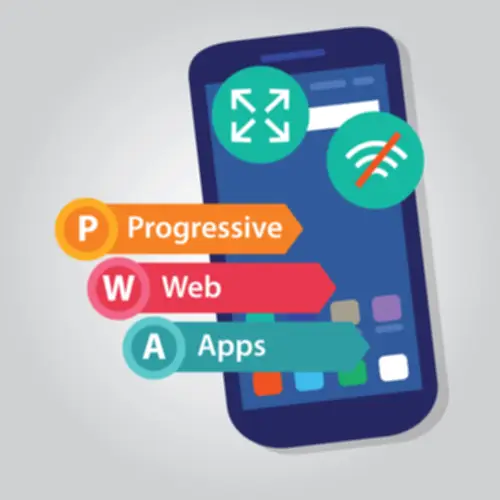Transform Your Business With AI Software Development Solutions https://www.globalcloudteam.com/ — be successful, be the first!
What Is Cloud Native? A Comprehensive Information
This creates potential safety breach factors that require robust safety measures to safeguard cloud-based assets, applications, and information. From constructing a new cloud-native app to modernizing your present software platforms, it’s time to make a move to a process that may simplify and amplify your efforts. Managed companies on the cloud implies that you won’t have to worry about the internal workings of your enterprise cloud, and you can focus on building apps. In this model, software builders construct and maintain a distinct set of loosely coupled microservices that together create the applying. Developers can iterate every microservice independently; they no longer have to wait for all components to be updated before delivering new code into manufacturing. One of the key soa vs microservices features of cloud-native architectures is using microservices, where functions are damaged down into smaller, independent parts.
Principles Of Cloud-native Structure
Scalability refers to the capacity of a system to deal with increased demand or site visitors by including or eradicating resources dynamically. In the context of adopting cloud native infrastructure, organizations can scale their resources kotlin application development up or down without worrying about physical limitations or hardware constraints. Watsonx.ai empowers utility growth teams to seamlessly combine AI into their workflows.
Cloud Native Functions Vs Traditional Monolithic Applications: An Example

Whether it is private, public, or hybrid cloud, cloud native tools and technologies offer a extra sustainable method to constructing a scalable ecosystem. There are more than sufficient reasons to move away from their legacy counterparts so you can construct faster and be always able to iterate and deploy quickly and frequently. Furthermore, the cloud native method optimizes IT and hastens digital software transformation without downtime. On the other hand, cloud hosted options can have efficiency and price associated challenges as the staff is configuring the hardware configurations and software setups manually. Organizations can combine cloud-native services to construct purposes with distinctive value enabled by the cloud, corresponding to superior analytics, cell apps, and chatbots.
They are sometimes compatible with virtualized environments, which is a foundational side of cloud computing. Like being a local speaker—you don’t just use the language; you know it inside and out. Similarly, Cloud Native functions are built to live within the cloud and benefit from every little thing it presents.

Contact us to discuss how our cloud-native solutions can help future-proof your corporation and place you for sustainable development. Boost annual income by 14% and minimize maintenance costs by up to 50% with focused app modernization methods. Learn the means to speed up and streamline application modernization with generative AI and traditional AI.
Cloud-native purposes are particularly designed to fully leverage cloud capabilities, offering better scalability, flexibility, and value efficiency. Choosing between cloud-friendly and cloud-native approaches is determined by components like development time, price range constraints, and the level of cloud advantages desired. In this cloud-native application, every performance (e.g., consumer authentication, product catalog, fee processing) is developed as an unbiased micro-service. These micro-services are containerized utilizing Docker and deployed to a cloud-based container orchestration platform like Kubernetes. The utility is constructed with serverless components, using cloud functions for handling particular duties.
In this situation, the only method to handle an escalating workload is to buy and manually install further hardware, always a pricey and time-consuming enterprise. Conversely, scalability is automated and just about unlimited in the cloud, available on demand. This becomes a business-critical benefit for an app or website that experiences unpredictable or seasonal spikes in site visitors and utilization. If you are building software program to run in a cloud environment, you can be extra productive and guarantee top quality should you develop and take a look at those applications within the cloud. Individuals have began to adopt 5G for better accessibility worldwide, with organizations specializing in adapting to fashionable and sooner applied sciences.
- In its fundamental form, cloud computing runs apps on cloud providers’ managed sources.
- Serverless architectures cut back the need to preserve mounted infrastructure, optimizing costs by merely paying for precise useful resource utilization.
- As digital transformation becomes a priority across industries, cloud-native architecture stands out as a forward-looking method that allows organizations to be extra agile, resilient, and scalable.
- Furthermore, cloud-native purposes are designed with modular architectures, which provides greater flexibility for future updates.
As the variety of microservices grows, container orchestration manages many containers. By doing so, all the microservices can run easily as a single unified utility. Microservices are a vital part of Cloud Native structure that lets every part of an app scale independently. Security is essential in cloud-native structure, given the distributed nature of microservices. Adopt safety practices like identification and entry administration (IAM), common vulnerability scanning, and using secure APIs.
It was a distant dream a while back and it was companies like Netflix who pioneered this approach and paved the finest way for extra technologically enabled drastic transformation. You just need to look at the phenomenal success that Netflix has achieved in a short span of time by adopting a cloud computing method. At the core of it, cloud computing increases the speed of your small business leveraging on the scalability and automation that it has to supply.
While boosting effectivity, steady integration and steady deployment (CI/CD) pipelines additionally improve the frequency of modifications. Ensure that you fastidiously and successfully handle these modifications and that there are minimal disruptions to operations, then affirm the influence on safety and compliance. Legacy growth processes, deeply embedded in organizational workflows, pose an integral barrier to attaining cloud-native excellence. Migrating legacy processes to the cloud only transfers their location without essentially aligning them with the dynamic and scalable character of cloud-native methods.

Not surprisingly, the companies that may provide solutions that meet the rising wants of their customers will journey the wave faster. These firms are prone to attract and retain the best customers who appreciate such a customer-centric expertise. Cloud-native options enable builders to deliver software and app upgrades briefly, steady cycles, paving the way for steady delivery. The container orchestrator is a key enabler of such isolated threat administration. The primary feature of cloud-native functions is autoscalability, meaning the functions are capable of scale automatically to deal with future needs. The better part about cloud-native application autoscalability is that it can happen with a single click.
However, the probabilities of poor service high quality and high pricing plans are integral to conventional app development, where businesses have to stay to the identical cloud vendor as a end result of time and resource constraints. However, cloud-Native app growth mitigates vendor lock-in issues by enabling businesses to use companies from multiple cloud vendors. Businesses can easily shift to the vendor with higher cloud pricing and benefits. Containers encompass microservices to make apps portable throughout varying cloud environments.
As organizations more and more adopt cloud-native ideas, a number of tendencies and predictions emerge, pointing to the future path of this transformative strategy to constructing and deploying purposes. A financial services agency confronted challenges with regulatory compliance and the fast deployment of latest options as a end result of its outdated infrastructure and growth practices. To make this software cloud-friendly, the builders refactor it to be compatible with a preferred cloud provider. They substitute the on-premises server with a virtual machine within the cloud, set up the mandatory software, and connect it to a cloud-managed database service. Cloud-friendly solutions are adaptable to the cloud, while cloud-native solutions are purpose-built to thrive within it.
